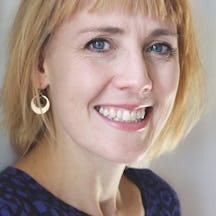Throughout history, humans have revered the sun as a creator and destroyer of life; they have based their belief systems around it, as well as recognising the healing properties of sunlight. Today, indoor living and artificial light have diminished our relationship with the sun and the light–dark cycle it presides over, yet scientists are increasingly recognising the influence it wields over us and using this knowledge to improve our health and wellbeing.
The sun is a boiling mass of plasma at the centre of the solar system. Earth’s relationship with the sun creates day, night and the seasons, but our bodies have also evolved to work in partnership with it. Sunlight tweaks the timing of our circadian clocks and the biochemistry of our skin, with broad implications for our health.
Across millennia, in cultures separated by thousands of miles, people have tracked the sun’s movements and constructed stories about it. This makes sense, because the sun so strongly shapes our experience of the world. Here, we see the Roman sun god, Sol, being pulled across the sky in a chariot, an idea also found in Bronze Age Denmark, ancient India and Greece.

Our ancestors also recognised the sun’s power over our bodies. Apollo was the Greek god of light, but also a patron of medicine, which is why he features on this apothecary’s sign. The ancient Greeks and Romans believed in the healing properties of sunlight, advocating sunbathing as a treatment for numerous ills, from epilepsy to lethargy, malnutrition and obesity.

Meanwhile, traditional Chinese medics believed that the vitality of our various organs peak at different times of day. Though their explanations for these rhythms may sound unscientific, modern scientists are waking up to the importance of 24-hour fluctuations in our physiology, which could influence our response to food at various times of day or even how well our drugs work.
Medical interest in sunlight was rekindled towards the end of the 19th century: “It is the unqualified result of all my experience with the sick, that second only to their need of fresh air is their need of light… And that it is not only light but sunlight they want,” wrote nurse Florence Nightingale. Recent research supports the idea that patients with greater daylight access may recover faster and have a greater chance of survival.
Also around that time, Thomas Edison invented the incandescent light bulb. Edison bragged about needing just three hours sleep per night, but chronic sleep deprivation is a major cause of accidents, and precedes heart disease, diabetes and Alzheimer’s disease. Electric lighting has brought many benefits – however, it has also undermined our relationship with the natural light–dark cycle and our sleep.
By the 1920s, sunlight was being touted as a cure for pretty much every disease under the sun. Not only does solar UV light kill bacteria directly, it enables the synthesis of vitamin D. This helps build healthy teeth and bones, and is used by our immune cells to produce a chemical called cathelicidin, which kills bacteria.

Light-responsive cells at the back of the eye also enable our body clocks to remain synchronised with the external time of day. Through their connections with a brain region called the suprachiasmatic nucleus, our organs and tissue are able to anticipate and prepare for regular events in our environment, such as mealtimes, mental and physical activity, and sleep.

Meanwhile, exposure to bright light also has a direct alerting effect on the brain. In the Arctic and Antarctic circles, the sun never sets during summer months, and this can cause sleep problems among people stationed there. However, at lower latitudes, exposure to bright light during the daytime can improve reaction speeds, alertness, and sleep the following night. Balance is key.
Yet artificial lighting is shrinking the night. People living in light-polluted areas go to bed later than those living in darker areas. They also sleep less, are more tired during the daytime, and are less satisfied with the quality of their sleep. We evolved on a revolving planet with a 24-hour cycle of light and dark; it’s time to reconnect with that natural rhythm.
About the author
Linda Geddes
Linda Geddes is a science journalist who specialises in biology, medicine and technology. She has worked as both an editor and reporter for New Scientist magazine, and has received numerous awards for her journalism, including the Association of British Science Writers’ award for Best Investigative Journalism. She is also the author of ‘Bumpology: The Myth-Busting Pregnancy Book for Curious Parents-To-Be’.






